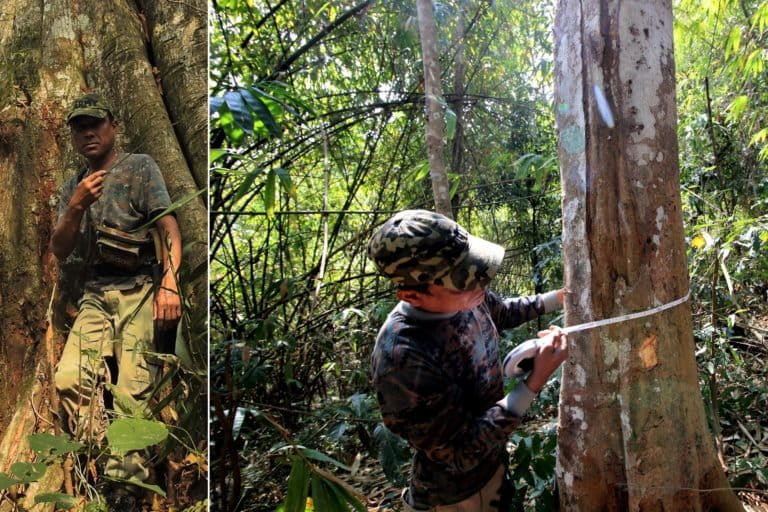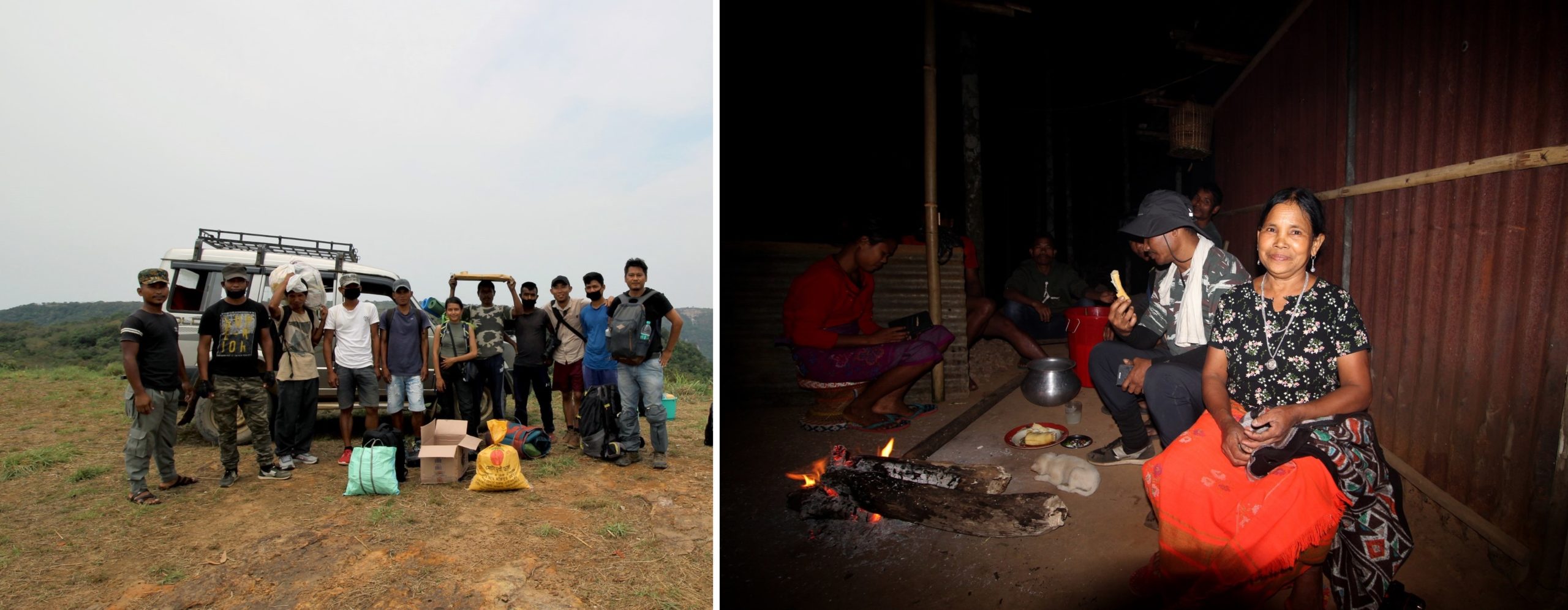- Local communities play a key role in supporting data collection by field researchers, especially non-native researchers collecting field data in unfamiliar landscapes. Field assistants usually belong to local communities and bring with them invaluable knowledge about the flora and fauna of their land, yet the scientific community largely undervalues their contributions.
- While studying forest resilience in Meghalaya, the author documents the various ways in which the expertise of local collaborators benefited his research – from field planning, vegetation sampling, and ensuring that research groups stay sensitive to the socio-cultural beliefs of local communities that live within forests.
- The quality of ecological research has much to gain if the expertise of field assistants is recognised and rewarded, both by forest departments through fair compensations, as well as by the science community through co-authorship in publications.
- The views in this commentary are that of the author.
Northeast India is home to more than 200 tribes. For the centuries before the government declared forests as ‘protected’, these were the communities that took care of these biodiversity hotspots. They have a strong connection to the land and their livelihoods continue to depend on it. While the cultural and historical value of these communities is more readily acknowledged, lesser talked about is the immense role of their knowledge in scientific research.
While studying the resilience of forests in Meghalaya for my postdoctoral research, in a collaborative project of Indian Institute of Science (Centre for Ecological Sciences) and Azim Premji University, Bengaluru, I personally experienced the scientific value of collaborations with field collaborator, who are usually from the local communities working under conditions of job insecurity, low compensation and hardly any recognition.
The resilience of a forest ecosystem refers to its capacity to recover after any environmental or anthropogenic disturbance (such as drought, flood, forest fire or logging). Ecologists are still trying to understand what factors make some forests more resilient than others, and this is what we have set out to do. In our study, we are investigating whether plant community structure and functional traits (such as leaf size, tree height, basal area etc.) are linked to forest resilience. We chose two tropical semi-evergreen forests in Meghalaya that differed in a number of ways – anthropogenic disturbance, vegetation composition, and also culturally. While the Nongkhyllem Wildlife Sanctuary (NWLS) is located in the Khasi Hills, the Balpakram National Park (BNP) is situated in the Garo Hills.

More than a helping hand
I come from Assam, so as an outsider in Meghalaya, I knew that I would need help to work in these difficult landscapes and also to communicate with locals. Daniella Lamare, a wildlife biologist from Shillong, joined our team, bringing a wealth of knowledge with her. Having Daniella on the team made it easier for me to work in a landscape that I have never been to before.

The Nongkhyllem Wildlife Sanctuary is home to more than 50 species of mammals and 400 species of birds. Jim Mari has worked here for two decades as a contractual staff member of the forest department. Also from the Khasi community, Jim has worked with numerous wildlife researchers on surveys and patrols and played a key role during our sampling of the vegetation in the forest, helping both in navigating the terrain and also in collecting data.

After our work at Nongkhyllem, Daniella and I proceeded to the next site at Balpakram. Its distinctive geography that encompasses a huge plateau and deep gorges, as well as its unique mosaic of tropical forest and grassland, makes the Balpakram landscape a dream come true for researchers to study. However, the steep terrain makes it difficult to carry out field work. The Garo people believe that the spirits of the dead reside in the forest as a part of the journey before their final departure.


Tushar M. Sangma and James A. Marak, contractual forest staff members of Balpakram NP, helped us throughout our fieldwork in Balpakram. Both have more than 20 years of working experience in this forest and had been recommended by another researcher, Shikha Srikant, who had worked with them on a large-scale camera trapping survey in the park. We were tremendously impressed by their extraordinary knowledge of the forest. They were able to tell us the flowering and fruiting phenology of trees, and the local name of the plants, which is significant for the taxonomic identification of the species. Besides that, their knowledge of the terrain and elephant movement in the park helped us to decide where to set up safe campsites.

A need for a shift from the ‘parachute research’ model
Despite years of expertise and risking lives every time they travel deep into the forest, there are still many local collaborators (forest staff) who remain without permanent jobs and are compensated poorly. Modern ecological research often ends up being ‘parachute research’, where scientists from distant elite universities conduct field research, collect data, and head back to their academic spaces without collaborating with local researchers and community members, demonstrating a clear imbalance of power. It has become too convenient for scientists to forget how much they must have relied on the local community to enter and navigate forests, which can be perilous to those without prior knowledge of the landscape.
Rarely is the expertise of these field collaborators recognised in meaningful forms such as authorship in scientific publications. While some scientists and journals have begun to change this, many others continue to overlook them using technicalities such as educational qualifications and lack of affiliation as an excuse. If we set up a structure that allows the local community to participate in field research projects as a collaborative partner, ecological research in India will have much to gain.
The author is a postdoctoral researcher from Assam who has worked extensively with field staff in the forests of Meghalaya where he was studying forest resilience. Contributions to the commentary were made by Nandita Jayaraj and Krishnapriya Tamma from Azim Premji University.
Banner image: A patch of tropical semi-evergreen forest of Nongkhyllem wildlife sanctuary and Umtrew river. Photo by Bidyut Sarania.
